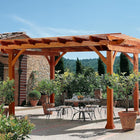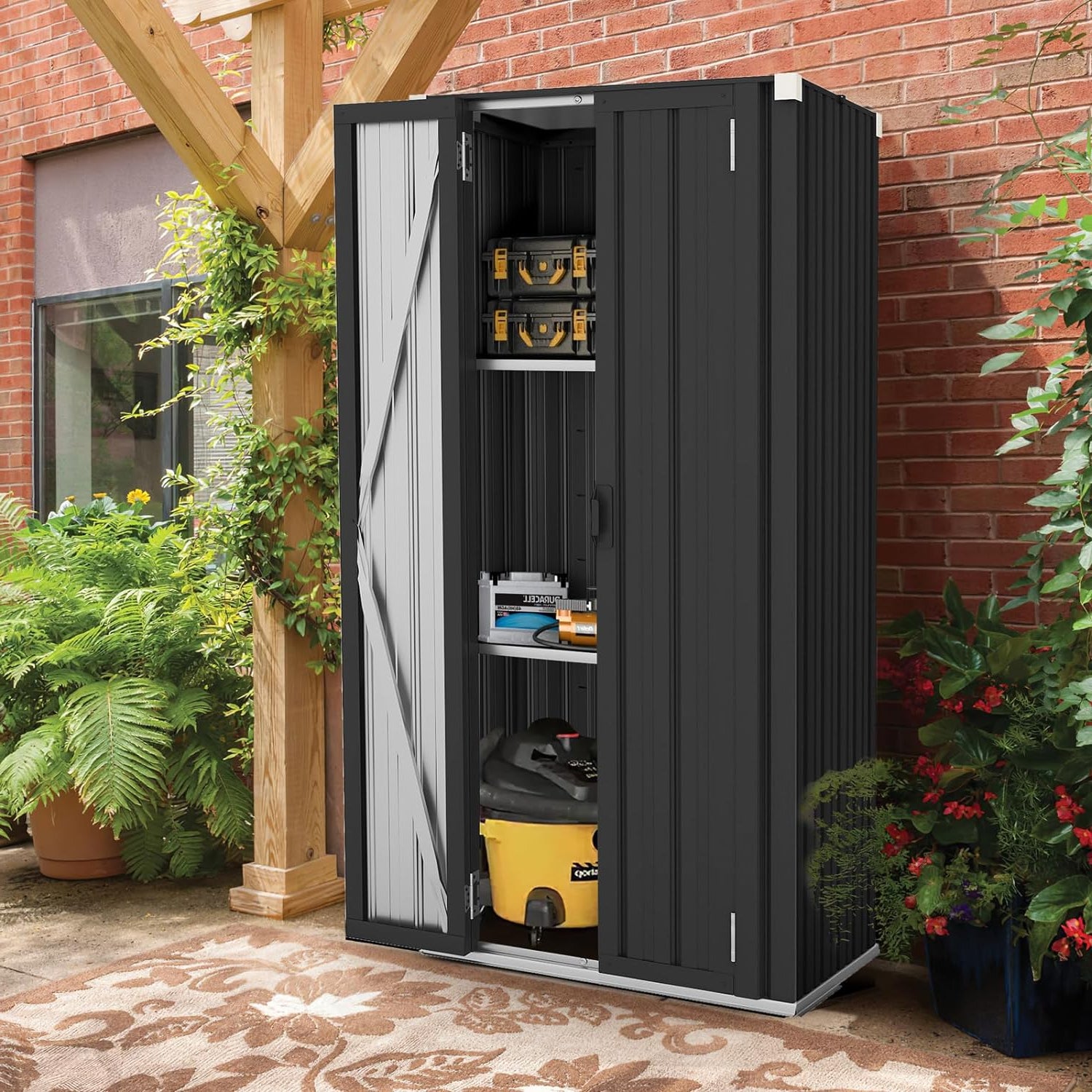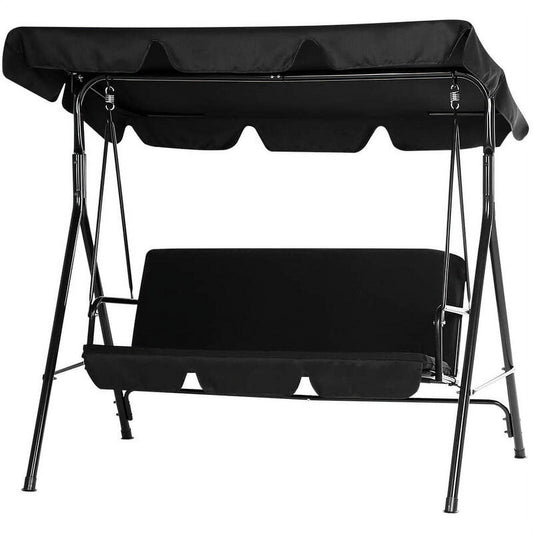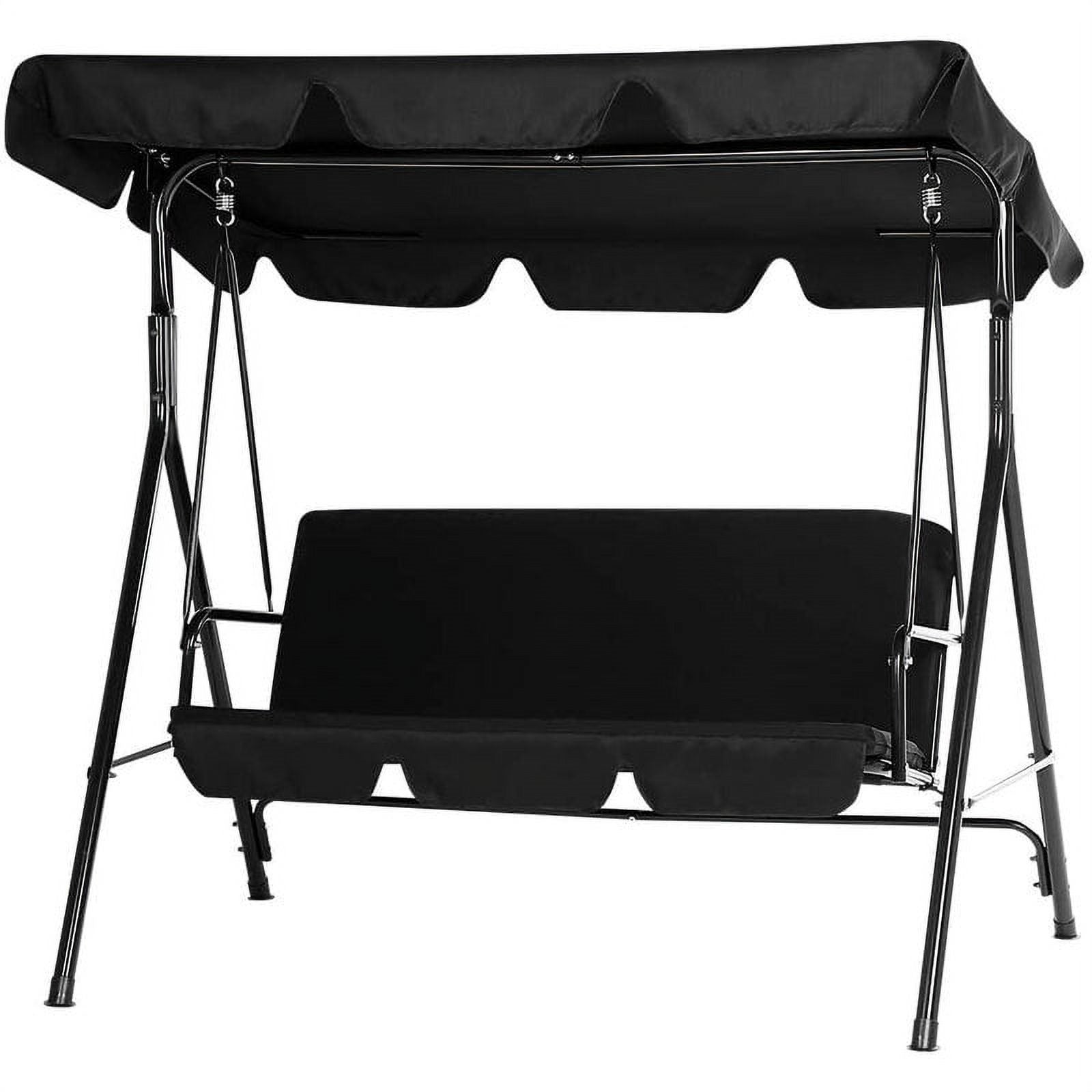A wooden gazebo is more than just a backyard structure—it’s a place for summer barbecues, quiet morning coffee, and gatherings with friends. But while it’s built to be enjoyed year-round, your gazebo also has to face every season’s challenges: blazing summer sun, autumn rain, winter snow, and spring humidity. Over time, these elements can dull its color, dry out the wood, and even cause cracks or rot.
That’s where sealing and re-staining come in. Regular maintenance not only protects the wood from damage but also keeps your gazebo looking fresh and inviting for years to come. The right care can mean the difference between a faded, weather-worn shelter and a stunning centerpiece that enhances your whole backyard.
In this guide, we’ll walk you through the best times of year to seal and re-stain, how to prepare your gazebo for the process, step-by-step methods for application, and even tips on choosing a stain color that complements your outdoor space.

Why You Should Seal & Re-Stain Your Wooden Gazebo
Protection from UV Sun Damage
Think of your gazebo’s wood like your skin—prolonged exposure to the sun can bleach out the color and weaken its surface. I once saw a neighbor’s cedar gazebo go from a deep, honey-gold to a dull, grayish white in just two summers because it was never sealed. A good UV-blocking sealant acts like sunscreen for your wood, keeping the color rich and the structure strong.
Defense Against Rain, Humidity, and Frost
Moisture is a slow but relentless enemy. After a rainy spring, my uncle discovered that the base of his untreated gazebo posts had started to swell and soften. By winter, frost had expanded tiny cracks into visible splits. Sealing creates a water-repellent barrier, stopping rain, snow, and humidity from seeping in and causing long-term damage.
Preserving the Color and Natural Wood Grain
A fresh coat of stain doesn’t just make your gazebo look “new” again—it enhances the natural wood grain, making every knot and swirl stand out. One customer of mine re-stained her gazebo before hosting her daughter’s outdoor wedding. She told me guests kept asking if she had bought a brand-new structure. That’s the kind of transformation a proper re-stain can deliver.
Preventing Cracks, Warping, and Rot
When wood dries unevenly or holds onto too much moisture, it twists, splits, and eventually rots. A well-sealed gazebo keeps internal moisture levels balanced, preventing these problems before they start. Trust me, replacing warped beams is far more expensive (and frustrating) than doing a quick seasonal re-seal.
When Is the Best Time to Seal & Re-Stain
Timing can make or break your backyard wooden gazebo maintenance project. The goal is to work when the weather helps the sealer or stain bond well with the wood instead of fighting against it.
Best Season – Spring to Early Summer
This is the sweet spot in most regions: temperatures are warm but not scorching, humidity is moderate, and you’re less likely to face sudden downpours. It also means your gazebo is protected before peak summer sun and heavy seasonal use.
Telltale Signs Your Gazebo Needs Attention
You don’t have to wait for a set calendar date — watch for clues:
- Faded or graying wood that’s lost its fresh color.
- Water soaking in instead of beading on the surface.
- Rough texture or splintering when you run your hand along the railings.
Ideal Weather Conditions
For the best results, aim for:
- 48+ hours with no rain after application.
- Low humidity, so the finish dries evenly.
- Mild temperatures (around 50–85°F / 10–29°C) to prevent blotching or peeling.
By pairing the right season with the right conditions, you’ll extend the life of your stain or sealer — and keep your gazebo looking great for years. If you’re considering purchasing a gazebo, you might also want to check out our YODOLLA cedar wood pergola, a stylish and durable choice.
Preparing Your Gazebo for Sealing Staining
A smooth, clean surface is the secret to a long-lasting seal or stain job. Skipping preparation is like painting over dust—it won’t stick well, and the results won’t last. Here’s how to get your wooden gazebo ready for its makeover:
1. Clean Thoroughly
Use a soft-bristle brush or low-pressure washer to remove dirt, pollen, and bird droppings. If you spot mold or mildew, treat it with a wood-safe cleaner mixed with water. Rinse well and let the wood dry completely before moving to the next step.
2. Repair Damage
Check for cracks, chips, or splinters. Fill minor gaps with exterior-grade wood filler and replace any rotten boards. This keeps the structure safe and ensures an even stain absorption.
3. Sand for Better Absorption
Lightly sand the surface with medium-grit sandpaper to open up the wood grain. This helps the stain soak in deeper and creates a smoother finish. Don’t forget to dust off any sanding residue with a dry cloth.
4. Remove Accessories
Take down curtains, cushions, hanging plants, and any decorative lights. This prevents accidental staining and gives you full access to every part of your gazebo.
💡 Pro Tip: If you have a backyard wooden gazebo near trees, lay a tarp underneath to catch falling leaves or debris during your work—nothing’s worse than fresh stain with stuck leaves!

Three Main Ways to Protect a Wooden Gazebo
Wood Oils (e.g., linseed oil, tung oil)
Wood oils penetrate deep into the wood fibers, nourishing and protecting from the inside out. They enhance the natural grain and provide a water-resistant barrier. Linseed oil is popular for its affordability and ease of application, while tung oil offers superior durability and a more resilient finish.
Sealants (e.g., varnish, lacquer)
Sealants create a hard, protective surface layer on the wood, guarding against moisture, UV rays, and wear. Varnish provides a glossy finish and long-lasting protection, suitable for areas exposed to heavy weather. Lacquer dries quickly and offers a smooth, polished look but may require more frequent reapplication.
Stain & Sealant Combination (color and protection in one step)
This option adds color while simultaneously protecting the wood, simplifying maintenance. It’s ideal for those who want to customize their gazebo’s appearance without sacrificing durability. These products often contain UV blockers and water repellents to extend the wood’s lifespan.
Recommended Brands
- Minwax – Known for high-quality wood stains, sealants, and oils widely available in North America. Their products offer excellent protection and beautiful finishes.
- Thompson’s WaterSeal – Specializes in waterproof sealants and stain combinations that protect outdoor wood from moisture and sun damage.
- Rust-Oleum – Offers a variety of durable wood finishes, including penetrating oils and clear sealants suitable for outdoor structures.
- Cabot – Popular for premium wood care products, especially their oil-based stains and sealers designed for harsh weather conditions.
- Sikkens – A professional-grade brand favored in Europe, providing long-lasting wood protection with rich color options.

Popular Stain Colors for Gazebos
Choosing the right stain color can enhance the natural beauty of your wooden gazebo while complementing your outdoor space. Here are some popular stain colors commonly used for gazebos, along with their approximate Pantone color references for more precise selection:
-
Honey Maple
A light, natural tone that highlights the wood’s grain with a warm, inviting glow. (Approximate Pantone: 7506 C)
Perfect for creating a fresh, airy look that blends seamlessly with garden surroundings. -
Early American
A classic brown with subtle red undertones, offering a timeless appeal. (Approximate Pantone: 4695 C)
This color works well for traditional styles, adding richness without overpowering the natural wood texture. -
Dark Walnut
A deep, rich brown with golden highlights that add depth and sophistication. (Approximate Pantone: 476 C)
Ideal for those seeking a bold statement while maintaining a natural wood feel. -
Briarsmoke
A rustic blend of brown and smoky gray, creating an aged, weathered appearance. (Approximate Pantone: 425 C)
Great for achieving a vintage or country-inspired look. -
Jacobean
A dark, rustic stain featuring visible golden grain that adds character and warmth. (Approximate Pantone: 433 C)
Often chosen for its dramatic yet classic finish, making any gazebo stand out.
These stain colors not only protect your gazebo but also allow you to customize its look to match your personal style and outdoor decor.

Step-by-Step Sealing & Staining Process
Sealing and staining your wooden gazebo is more than just brushing on a coat of color — it’s a process that, if done right, can add years to its life. Here’s the optimal way to tackle it:
1. Choose the Right Weather Conditions
Aim for a warm, dry day with low humidity. Ideally, you want 48 hours without rain before and after application. Too much moisture in the air can cause the stain to sit on the surface instead of soaking in.
2. Clean and Let Dry Completely
Remove dirt, mold, bird droppings, and any loose debris using a soft brush or power washer (low setting). Let the gazebo dry at least 24 hours before moving to the next step.
3. Sand the Surface if Necessary
If the wood feels rough, splintered, or has old peeling stain, lightly sand along the grain. This opens the wood’s pores, allowing better stain penetration.
4. Apply the First Coat Along the Wood Grain
Using a brush, roller, or sprayer, apply the stain in long, even strokes, following the direction of the grain for a consistent finish.
5. Wipe Away Excess Stain
After a few minutes, use a clean cloth to remove any pooling or drips — this prevents blotches and sticky spots.
6. Let Dry, Then Apply a Second Coat if Desired
Allow the first coat to fully dry (check the manufacturer’s instructions — usually 4–24 hours), then apply a second coat for richer color and added protection.
📋 Quick Reference Table – Gazebo Sealing & Staining
| Step | Action | Pro Tip |
|---|---|---|
| 1 | Choose weather | At least 48 hrs rain-free & low humidity |
| 2 | Clean & dry | Dry for 24 hrs before sanding |
| 3 | Sand surface | Use fine-grit paper for smooth results |
| 4 | Apply 1st coat | Follow wood grain for even finish |
| 5 | Wipe excess | Prevent sticky or blotchy spots |
| 6 | Apply 2nd coat | Optional, for deeper color & durability |
🎥 Watch the Process in Action
Want to see exactly how each step is done? Scroll down to watch our full video tutorial where we walk you through cleaning, sanding, sealing, and staining a wooden gazebo from start to finish. You’ll see real-time techniques for even coating, avoiding drips, and getting a smooth, long-lasting finish.
Conclusion
A well-maintained gazebo is more than just a backyard showpiece—it’s a long-term investment in comfort, beauty, and outdoor enjoyment. Seasonal maintenance, especially sealing and staining a gazebo, ensures your structure can withstand harsh weather while retaining its natural charm. Whether you’ve followed detailed wooden gazebo design plans or built a DIY wooden gazebo from scratch, protecting your wood with regular care will keep it looking fresh year after year. By making sealing and staining part of your annual outdoor routine, you’re not just preserving the wood—you’re safeguarding countless future moments spent relaxing, entertaining, and making memories under your gazebo.
FAQ
Q: How often should I seal and stain my wooden gazebo to keep it protected?
A: It’s recommended to seal and stain your wooden gazebo every 2 to 3 years. However, this depends on your local weather conditions and exposure. If your gazebo faces harsh sunlight or heavy rain, you might need to do it more frequently to prevent wood damage and fading.
Q: What are the signs that my wooden gazebo needs re-staining or sealing?
A: Common signs include faded or dull color, water stains, cracks, and dry or rough wood surfaces. If water stops beading and soaks into the wood quickly, it’s time to reapply stain and sealer to protect your gazebo.
Q: Can I stain and seal my wooden gazebo myself, or should I hire a professional?
A: If you have basic DIY skills and proper tools, you can stain and seal your gazebo yourself and save on costs. But for larger or complex structures, or if you want a perfect finish, hiring a professional is recommended.
Q: What weather conditions are best for sealing and staining a wooden gazebo?
A: The best time to stain and seal is during dry weather with temperatures between 50°F and 85°F (10°C to 30°C), low humidity, and no strong winds or direct sunlight. Avoid doing this right before rain or on very humid days to ensure proper drying.
Q: What type of stain and sealer works best for cedar or other wooden gazebos?
A: Oil-based or water-based stains with UV protection and water repellents work best for cedar and other wood types. Semi-transparent stains highlight the natural grain while protecting against weather damage. A quality sealer adds moisture resistance and prolongs the gazebo’s life.
















